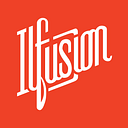Tips for Creating an Effective One-Page Website
As business owners know, in this era, having a website is no longer just an option but a necessity. For smaller businesses, however, creating a website may not be entirely feasible — the lack of budget, time, and resources are the common reasons.
A one-page website, however, gives you the best of two worlds. They are relatively more affordable to create compared to a classic website, and it allows you to get your brand the online presence it needs to thrive in today’s internet-driven landscape.
One-Page Websites: Pros and Cons
One-page websites, as the term suggests, present content on a single HTML page where visitors can easily navigate in one long scroll versus having to go through and load several separate HTML pages.
As mentioned, one-page websites are usually cheaper to create. But beyond its affordability, it also offers the following benefits:
- Requires less time and resources to create
- Easier to maintain
- Can be created with no coding experience
- Depending on the nature of your target audience, may appeal to those that prefer a more streamlined user experience
However, one-page websites are not for everyone — one of its biggest cons is limited space. It’s best reserved for small businesses and for individuals needing a simple website that doesn’t require complex features or lots of content.
How to Create an Effective One-Page Website
1. Have a clear purpose in mind
Despite the simplicity of a one-page website, it still requires careful planning to condense all the necessary content to achieve your goal. Establish what you want to achieve with your website: Is it to generate new leads, boost sales, increase email subscribers, etc.?
Having a clear purpose in mind will guide you on what content you would put on your website. For one-page websites, targeted content is crucial.
2. Mind the structure and visual hierarchy
Visual hierarchy is important for one-page websites so as not to clutter them. Break your content into distinguishable sections based on the level of importance. Use a combination of headers, images, colors, typography, and other design elements to create visual breaks.
Some of the important considerations to make are the following:
- Emphasize your contact information by placing it at the top of the website.
- Make your CTA visually outstanding, not just with the color but also its placement. It’s best to place it at the top of the page.
- Use a combination of text and multimedia elements (e.g., videos, images, animations).
- Lastly, keep it simple.
3. Make it intuitive and interactive
Navigation menus
Navigation menus are usually optional for single-page websites, but we still highly recommend including them for ease of use.
A practical way to utilize navigation menus here is to enable auto-scrolling to a pre-determined section on the same page when users select a menu item. For those who do not have coding experience, you can refer to this JQuery Smooth Scroll guide on GitHub, or use website builders like Elementor.
Interactive scrolling
And with regard to interaction, one of the elements you can work around is scrolling. Parallax scrolling effects have grown in popularity lately, especially for single-page websites because it adds interaction and visual appeal.
With the parallax effect, your page background moves slowly as the user scrolls up or down. For beginners, you can refer to this guide by W3 Schools.
4. Optimize your website for search engines
One of the main concerns for single-page websites is that search engines have little content to work around for SEO ranking. You will need to pay close attention to on-page SEO elements, such as the title tag, meta description, image ALT tags, and URL to make the most of the content you have.
Here are a few other ways to optimize your single-page website for search engines:
- Consider each section of your one-page site as a separate “page” — that is, optimize for each section. For section headings, assign them with <h1> tags. Each section should also have a target keyword, and as Yoast recommends, it’s best to create a <div> or <section> for each keyword, with a proper ID assigned to it as well.
- Regularly rewrite your content. Content relevancy is crucial for SEO, and for single-page sites, this means regularly updating/revising your content to keep it fresh and aligned with your audience’s changing needs.
- Be mindful of the page speed. One of the dangers of one-page websites is that page speed could suffer especially if there are too many elements to load. Be mindful of how “heavy” your website is and regularly monitor its performance by using tools such as Google’s PageSpeed Insights.
The decision whether to go for a one-page website or a classic, tab-driven one highly depends on your website goals, the type of content you want to present, your budget and time, and the resources you currently have.
Both formats have their own share of merits and faults. Carefully assessing what you need as a business is crucial when deciding how to go about your first website. If you want to learn more about web development, design, and SEO, head on to our blog at https://www.ilfusion.com/blog.
